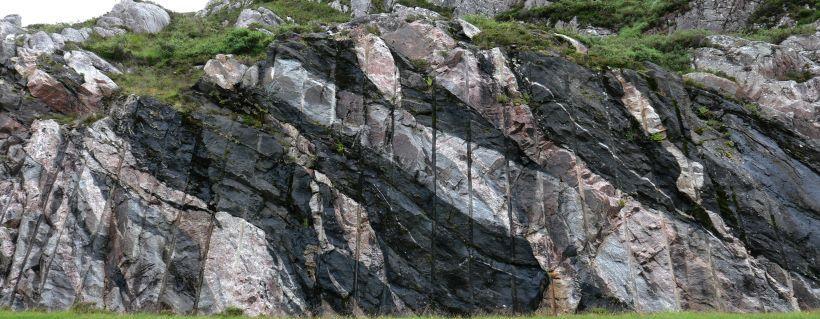
Lead supervisor: Alex Copley, Earth Sciences
Co-supervisor: Owen Weller, Earth Sciences
Brief summary:
This project will cross traditional disciplinary boundaries, and provide a new understanding of how the continental crust and upper mantle forms, deforms, and evolves, with direct relevance to earthquake hazards and the distribution of critical metals.
Importance of the area of research concerned:
For too long physical and chemical models of the formation, evolution, and deformation of the lithosphere (crust and upper mantle) have been produced in isolation. Thanks to a new understanding of the feedbacks between rock deformation, composition, metamorphism, and melting, the time has now come to produce a truly unified view of the evolution and deformation of the continental lithosphere. Doing so will let us address a wide range of questions, including: (1) whether all deformation belts follow a similar evolution through time, or if pre-existing structure and material properties, or local igneous and metamorphic processes, govern the tectonics; (2) the relationships between the geologically-instantaneous view of lithosphere deformation provided by observations and models of individual earthquake cycles, the long-term growth and decay of mountain belts and extensional basins, and the petrological processes operating within them; (3) how and why the nature of tectonics varied through Earth’s history. The societal relevance of this work stems from understanding the dynamic controls on earthquake occurrence and characteristics, and the distribution of critical metal resources.
Project summary :
This project will span a wide range of disciplines, and combine geophysical and petrological observations (e.g. earthquake seismology, space geodesy, metamorphic and igneous assemblages and textures) with cutting edge numerical models (thermal, deformation, and thermodynamic) to understand the formation, evolution, and deformation of the continental lithosphere. In particular, the project will explore the feedbacks between composition, temperature, deformation, melting, and metasomatism. The project will simultaneously address tectonically active regions and analogous deformation belts preserved in the geological record, to capitalise on the distinct strengths and weaknesses of the observations and models that can be constructed in each setting: by combining these approaches, a unified model of the deformation and geological evolution of the continents can be produced.
What will the student do?:
The student will map lithosphere rheology in currently-active deformation belts, using observations and models based upon earthquake seismology and space geodesy (InSAR). In tandem, they will perform a petrological analysis of analogous ancient deformation belts preserved in the geological record. They will then produce a model that can simultaneously explain all of this diverse range of observations, based upon the numerical tools previously developed by the supervisors. A range of target regions are available for both strands of the work, and we are especially interested in those that display a diverse range of (active and ancient) tectonic, metamorphic, and igneous processes – please get in touch for further information. However, the focus of this project is on understanding global principles, rather than regional specifics.
References - references should provide further reading about the project:
Whyte, A., Weller, O., Copley, A., & St-Onge, M. (2021). Quantifying Water Diffusivity and Metamorphic Reaction Rates Within Mountain Belts, and Their Implications for the Rheology of Cratons, Geochemistry, Geophysics, Geosystems, 22, doi:10.1029/2021GC009988.
Penney, C., & Copley, A. (2021). Lateral variations in lower crustal strength control the temporal evolution of mountain ranges: examples from south-east Tibet, Geochemistry, Geophysics, Geosystems, 22, doi:10.1029/2020GC009092.
Weller, O., Mottram, C., St-Onge, M., Moller, C., Strachan, R., Rivers, T., & Copley, A. (2021). The metamorphic and magmatic record of collisional orogens, Nature Reviews Earth and Environment, doi:10.1038/s43017-021-00218-z.
Applying
You can find out about applying for this project on the Department of Earth Sciences page.